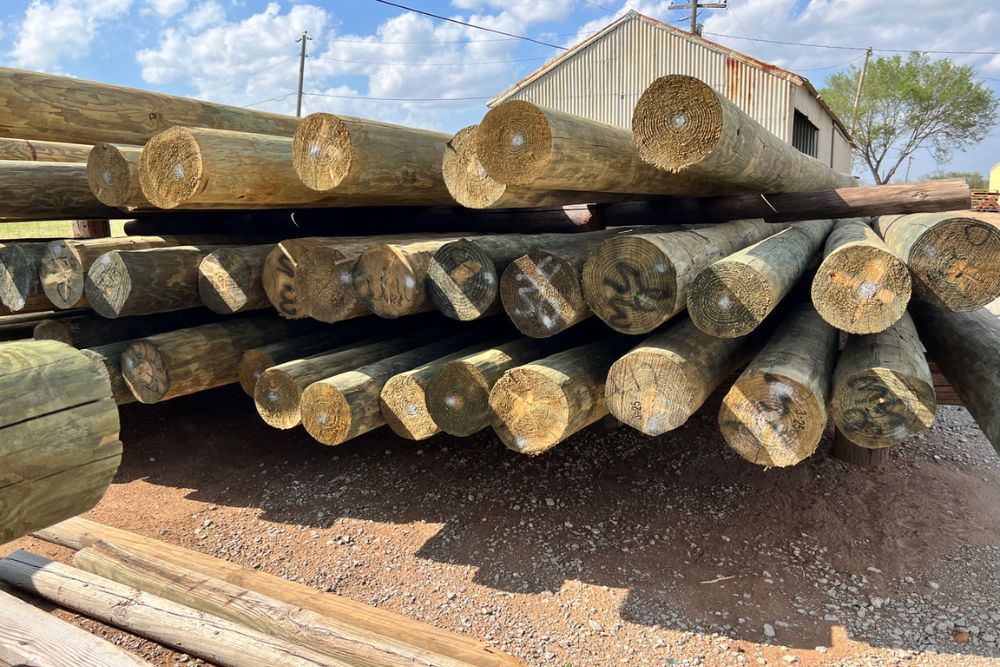
- Erin Walker
- Comments 0
- 02 Apr 2025
The Price of a Wooden Electric Pole Replacement: Fixing electrical structures often means changing out old wooden power poles. The lifespan of these poles is not set in stone. It can change based on weather, care, and treatment. Knowing what it costs to replace a wooden power pole is key. In this write-up, we’ll explain the different things that can change the cost of replacement. We aim to give a full picture to help you decide wisely.
Factors Influencing the Cost of Wooden Electric Pole Replacement
1. Type of Wooden Pole
The type of wooden pole you choose significantly impacts the overall cost of replacement. There are various options available, including:
- Species of Wood: There are a bunch of wood types out there. Some are durable, some are affordable, and some are easy to find. Take cedar, pine, and Douglas fir, for instance. Cedar’s great because bugs and rot don’t bother it. However, it can be pricier than pine.
- Treatment: Poles treated with preservatives, or pressure-treated, often have a higher initial cost. But, in the end, they’re worth it. How? They don’t need replacing as often. This fact saves you money over time. Plus, the kind of treatment they get can play a part in how long they last and their price.
- Height and Diameter: The specifications of the pole also play a crucial role. Taller and thicker poles require more material and labor to install, which directly impacts the cost.
Choosing the right type of pole is essential for balancing upfront costs with long-term durability and maintenance requirements. Consulting with a professional can help you determine the best option for your specific needs.
2. Labor Costs
Labor costs can vary widely based on several factors, including:
- Location: Depending on where you live, labor rates may be very different. People who live in rural areas, where the cost of living is lower, often have to pay more for labor in cities.
- Skill Level: Swapping out electric poles takes some know-how. You may need to hire trained workers. Even though electricians or contractors who have specialized knowledge might cost a bit more, their familiarity with the task means they can get it done right, and without any danger.
- Time Required: The job’s difficulty can affect the work’s cost. If the pole is in a tricky spot or if issues like nearby utilities arise, the task could take more time. This would raise the cost of labor.
Grasping the concept of labor expenses is key for properly planning your project budget. By gathering various estimates from different contractors, you have the chance to discover a fair price, but also ensure good craftsmanship.
3. Additional Equipment and Materials
In addition to the wooden pole itself and labor, several other materials and equipment may contribute to the overall cost:
- Hardware: Securing the new pole usually calls for new bolts, brackets, and similar items. Even though they’re tiny, their costs can start to build if you’re swapping out several poles.
- Transportation: If the replacement involves transporting new poles to a remote location, transportation fees can significantly increase the total cost.
- Safety Equipment: If the pole is tall or if local rules say so, workers might need special safety stuff. That could mean harnesses, ladders, or bucket trucks, and those all add to the cost of the project.
Extra expenses can often get ignored. However, they are critical to fully grasp the overall investment needed for pole replacement. When budgeting, always consider these factors.
4. Permits and Regulations
Before replacing a wooden electric pole, it’s crucial to be aware of local regulations and permit requirements, which can affect costs:
- Permitting Fees: Many jurisdictions require permits for replacing electrical infrastructure. The fees for these permits can vary and should be included in your budget.
- Inspection Costs: Once you’ve installed it, some places require checks. They want to make sure you’re following local rules and keeping things safe. These checks might mean more costs.
- Utility Company Requirements: Your place determines the rules for changing poles. Utilities may need certain materials, methods, or checks before installation.
If you don’t think about these regulatory costs, you might have to pay extra money during the replacement process. Before you start any project, you should talk to the local government or your utility company.
5. Total Cost Estimates
When looking at all the factors, the overall price to swap out a wooden electricity pole fluctuates a lot. Homeowners could potentially be shelling out $1,500 to $3,000 for just one pole substitution. It’s a ballpark figure, consisting of the pole’s expense, manual work, and needed materials.
- Basic Replacement: For a straightforward replacement in an accessible area with minimal complications, costs may be on the lower end of the spectrum.
- Complex Scenarios: If the pole is in a challenging location or if multiple poles need replacing, the price can easily escalate. Additionally, using premium materials or specialized services will drive costs higher.
It’s always a good idea to obtain multiple quotes from contractors and consider all the factors discussed to get a more accurate estimate tailored to your specific situation.
Conclusion
Switching out a wood electric pole takes on many expenses. This involves the pole kind, work, extra stuff, and legal charges. Knowing these aspects can help homeowners make smart choices that fit their money plan and wants. Always think about getting expert recommendations and various cost estimates to have a successful and affordable pole swap job. Spending money on good quality materials and capable workers assures safety and trustworthiness. It can even lengthen the life of your electric setup, giving you calmness for many years ahead.


